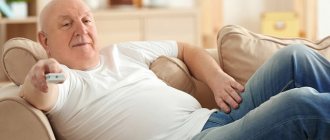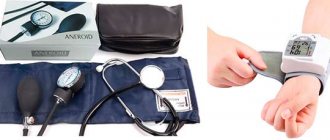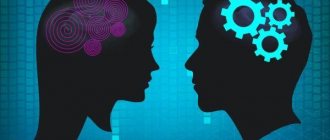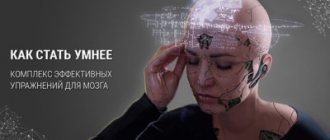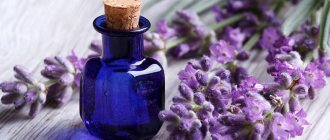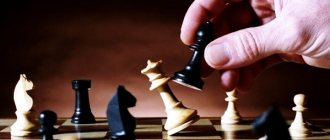General recommendations
The diet must meet the following requirements:
- fractional meals according to schedule;
- do not create excessive stress on the gastrointestinal tract;
- ensure a balanced intake of fats, proteins, carbohydrates, vitamins into the body;
- meet the permissible calorie level;
- contain a minimum of salt, sugar and more liquid;
- do not contain fried foods: only boiled and stewed (soups, cereals, vegetables).
Calorie content
In the first days after discharge from the hospital, the daily calorie intake should not exceed 1500 kcal; after a week it can be increased to 2000 kcal. After 3-4 weeks you can reach the level of 2500 kcal. The ratio of fats, proteins and carbohydrates should correspond to the values of 50, 100 and 500 g per day. It is better to obtain fats through the consumption of seafood, nuts, and unrefined oil; proteins - from lean meat (chicken, rabbit); carbohydrates - from cereals, bread, pasta.
Fractionality
Meals should be taken in small portions at least five times a day, preferably at the same time. The last dose should be no later than 3 hours before bedtime. Overeating is unacceptable. Feelings of hunger between meals can be satisfied with tea without sugar or low-fat kefir.
Temperature
It is important to avoid temperature excesses: both too hot and too cold food are harmful. The optimal food temperature should be +38 °C. Warm food is better absorbed and does not overload the gastrointestinal tract.
Consistency
After a stroke, the ability to eat is greatly limited, so the person is first fed through a tube. As chewing and swallowing functions are restored, you can move on to spoon-feeding liquid and puree foods. When the patient can chew, you can begin to give food in small pieces.
Heat treatment
The optimal types of heat treatment are boiling and stewing. Frying and deep frying are strictly prohibited.
What should the diet be like?
It should be noted right away that the diet for bedridden patients must comply with the basic principles of proper nutrition, which apply to any person. These include:
- Adequacy. The diet must correspond to the body's energy expenditure.
- Balance. Nutrition should be balanced in essential nutrients.
- Regularity. A certain number of meals per day should be provided.
- Safety. You need to maintain hygiene and be able to distinguish between stale and fresh foods.
In this case, it is necessary to take into account the characteristics of the patient’s body indicated above. Let's look at the basic principles of nutrition for bedridden patients.
Tips for choosing products
Proper nutrition for people who have suffered a stroke is the path to a speedy recovery. A weakened body is incredibly vulnerable, and damaged functions need to be restored. Incorrectly selected products can significantly worsen the patient’s condition and even provoke a new attack. Therefore, when creating a menu, you must constantly check the list of permitted and prohibited foods compiled by your doctor.
Healthy food
The list of healthy foods includes:
Low-fat varieties of fish, meat and poultry:
- a rabbit;
- beef;
- turkeys;
- Chicken;
- cod;
- flounder.
Low-fat dairy products:
- milk;
- kefir;
- curdled milk;
- fermented baked milk;
- cottage cheese.
Cereals:
- wheat;
- buckwheat;
- oatmeal
Vegetables, baked or pureed:
- eggplant;
- carrot;
- pumpkin;
- tomatoes;
- potato;
- beet;
- red and green peppers.
Berries and juices from them:
- pomegranate;
- grape.
What is undesirable to eat?
For hemorrhagic stroke, the menu in small quantities can include:
- egg yolk;
- fish caviar;
- legumes;
- raisin;
- fatty fish;
- processed cheese;
- sweet cereals;
- milk soups.
Despite the possibility of taking these products, doctors recommend including them in the diet as rarely as possible.
What foods are prohibited?
The following are strictly prohibited:
- any fatty foods (meat, milk, cottage cheese, sour cream, etc.);
- semi-finished products and by-products;
- pickles, smoked foods, pickles;
- hot sauces, seasonings;
- bakery;
- sausages;
- chocolate;
- Tea coffee;
- cheeses;
- confectionery creams in oil;
- fatty broths;
- leafy greens;
- mushrooms.
Reviews and results
Nutritional therapy for stroke is not a temporary measure, but should become part of your lifestyle. Only giving up bad eating habits and a healthy diet will help restore lost functions and good health. This therapeutic diet is balanced, does not have significant restrictions in products, and therefore is easily feasible in everyday life, allowing you to constantly adhere to it.
Some in their reviews note that at first it was difficult to get used to limiting salt and sweets, but over time they found an alternative to them in the form of herbs and dried fruits. Limiting carbohydrates and salt allows you to reduce weight. Here is what patients report about the results of treatment in their reviews.
- “... I had a pre-stroke condition - my head hurt badly, my speech slowed down and my hand went a little numb. Luckily everything went well before the ambulance arrived. There was high blood pressure, and during examination in the hospital, high cholesterol was discovered. I must say that I have never checked either one, although it’s been 50 years. They prescribed a diet in addition to the medications, now I follow and drink everything. The diet helped normalize cholesterol and blood pressure (I don’t eat salt). Nutrition helped me lose weight. But I think it’s difficult to eat like this all the time, so on holidays I allow sweets and cake. Still, I’m violating”;
- “... A low-salt diet helps keep blood pressure down. Before that, I tried a lot of pills, but I couldn’t stabilize my blood pressure. The doctor kept scaring me of a stroke and said that I was in danger if I didn’t lose weight and take care of my blood pressure. I had to go on a diet without salt and sweets, and sharply limited buns and other baked goods. My result in 4 months I lost 7 kg, it became easy to move because the fluid was gone, my blood pressure became normal, but I still take pills”;
- “... The doctor said that diet after a cerebral stroke is as important as medication, because it allows you to monitor your weight, blood pressure, cholesterol and also normalizes sugar, which in recent years has been at the upper limit. Indeed, after 2 months of therapeutic nutrition, I lost weight, and my blood pressure also dropped by 20 mm. Hg Art., sugar returned to normal. All this is good, but it’s difficult for me to have dietary restrictions - I’m already used to eating wrong.”
Vitamins
To speed up the recovery of vital functions, the patient requires vitamins:
- "Retinol" (vitamin "A"), involved in the synthesis of taurine, necessary to prevent nervous excitement.
- B vitamins that normalize digestion, blood circulation and restore neurons.
- “Ascorbic acid” also helps normalize blood pressure and restore vascular elasticity.
- “Tocopherol” (vitamin “E”), which improves the flow of oxygen to the brain.
- Vitamin “P”, necessary for the regeneration of nerve tissue.
Diet goals for stroke
Nutrition plays an important role both in the process of preventing stroke and after a vascular crisis. The principles of the stroke diet are the same and are aimed at achieving the following goals:
- improvement of blood circulation in all parts of the body;
- blood pressure control - preventing blood pressure from rising above 140/90;
- lowering cholesterol levels in the blood and preventing the formation of cholesterol plaques in the vascular bed;
- acceleration of all metabolic processes, especially the stages of fat and carbohydrate metabolism;
- reducing the load on the cardiovascular system, kidneys and liver;
- normalization of the patient's weight.
Creating the right diet for a patient who has suffered a stroke is the most important stage of secondary prevention (preventing a re-exacerbation).
Rules for eating, or how to feed a stroke patient?
The most general rules for feeding a person in a post-stroke state are:
- Providing a quiet, calm environment, since the inability to feed independently has a strong depressing effect on the patient, which can lead to increased irritability and refusal to eat.
- Encouraging independence, even if this significantly slows down eating.
- Providing special utensils from which food and liquids will spill less. For example, you can drink through a straw, and put porridge not in an ordinary plate, but in a deep bowl.
- Feeding should take place in a sitting position from unbreakable containers.
- If the patient is bedridden or paralyzed, then all food should be liquid (to avoid constipation).
- You should always keep a towel or napkin at hand.
- The nurse should always remain in the patient's field of vision so that he can observe his movements.
When compiling a menu, it is necessary to take into account calorie content, vitamin composition and the presence of a sufficient amount of microelements:
- vegetables and fruits are excellent antioxidants necessary for hemorrhagic stroke;
- whole grains and broccoli are high in folic acid;
- potatoes, oranges, prunes are rich in potassium;
- You must eat boiled lean meat at least once a week;
- foods cannot be cooked in fat, and fat should only be consumed in the form of vegetable oil;
- Only lean meat, fish and dairy products are allowed;
- drinks are served weakly brewed;
- sauces and seasonings should not be spicy or salty;
- vegetables, meat, fish and poultry should be cooked in the oven, steamed or boiled. Frying is strictly prohibited;
- a serving of soup should not exceed 250–400 g;
- Fresh baked goods are prohibited. Bread and cookies should be eaten dry.
Diet
The classic three-a-day diet of an ordinary person is not suitable for a bedridden person. Typically, such patients eat little and are not able to consume in one sitting the amount of food that the body needs. You should try not to force feed, but to stimulate the appearance of appetite. The diet should include about 6 meals. What to feed a bedridden patient? Products should be selected taking into account the principles described above, the doctor’s recommendations and the patient’s wishes.
One more point: the food should be warm (not cold or hot). Hot food can burn the mucous membranes, and cold food can lead to colds due to weakened immunity.
Menu
A sample menu for three days might look like this:
Monday
Breakfast – cottage cheese casserole, weak and unsweetened tea.
Second breakfast – apple, biscuits.
Lunch – vegetable soup, a piece of rye bread.
Afternoon snack – biscuits, fruit or berry decoction.
Dinner – vegetable puree, steamed fish, vegetable juice (tomato).
At night - kefir.
Tuesday
Breakfast - an omelet of 2-3 egg whites, weak and unsweetened tea.
Second breakfast – low-fat cottage cheese with berries.
Lunch – vegetable puree soup, steamed chicken cutlet, cabbage salad, rosehip infusion.
Afternoon snack – low-fat yogurt.
Dinner – steamed mackerel fillet, boiled black rice, dried fruit compote.
At night - kefir.
Wednesday
Breakfast - oatmeal porridge with low-fat milk, bran bread, tea.
Second breakfast – low-fat yogurt.
Lunch – fish soup, buckwheat porridge, fruit juice.
Afternoon snack – fruit salad.
Dinner – pumpkin casserole, berry juice.
At night - kefir.
Recipes
When choosing recipes for compiling a patient’s menu, it is necessary to proceed not only from usefulness. It is very important that the food is varied and tasty.
First meal
To prepare chicken soup:
- It is necessary to cook broth from the breast.
- Grind the finished chicken.
- Chop the carrots and onions and lightly fry in vegetable oil.
- Add wholemeal noodles to the broth and cook until tender.
- Add vegetables to the finished soup and simmer for another 3 minutes.
- Add finely chopped greens.
Second courses
To prepare millet porridge with prunes, you need:
- Take 100 g of prunes, rinse, add 300 ml of water and boil for 5 minutes. Then cool, remove the seeds and chop.
- Pour 200 g of millet into 400 ml of water and cook until the liquid boils away.
- Place prunes on the porridge, place the pan in the oven and bake at 180°C for 10 minutes.
To prepare baked flounder:
- Clean the fish, wash, dry, grease the inside with lemon juice and leave to marinate for an hour.
- Wrap the fish in greased foil and bake in the oven for 40 minutes.
- Place the fish on a plate and sprinkle with lemon juice.
